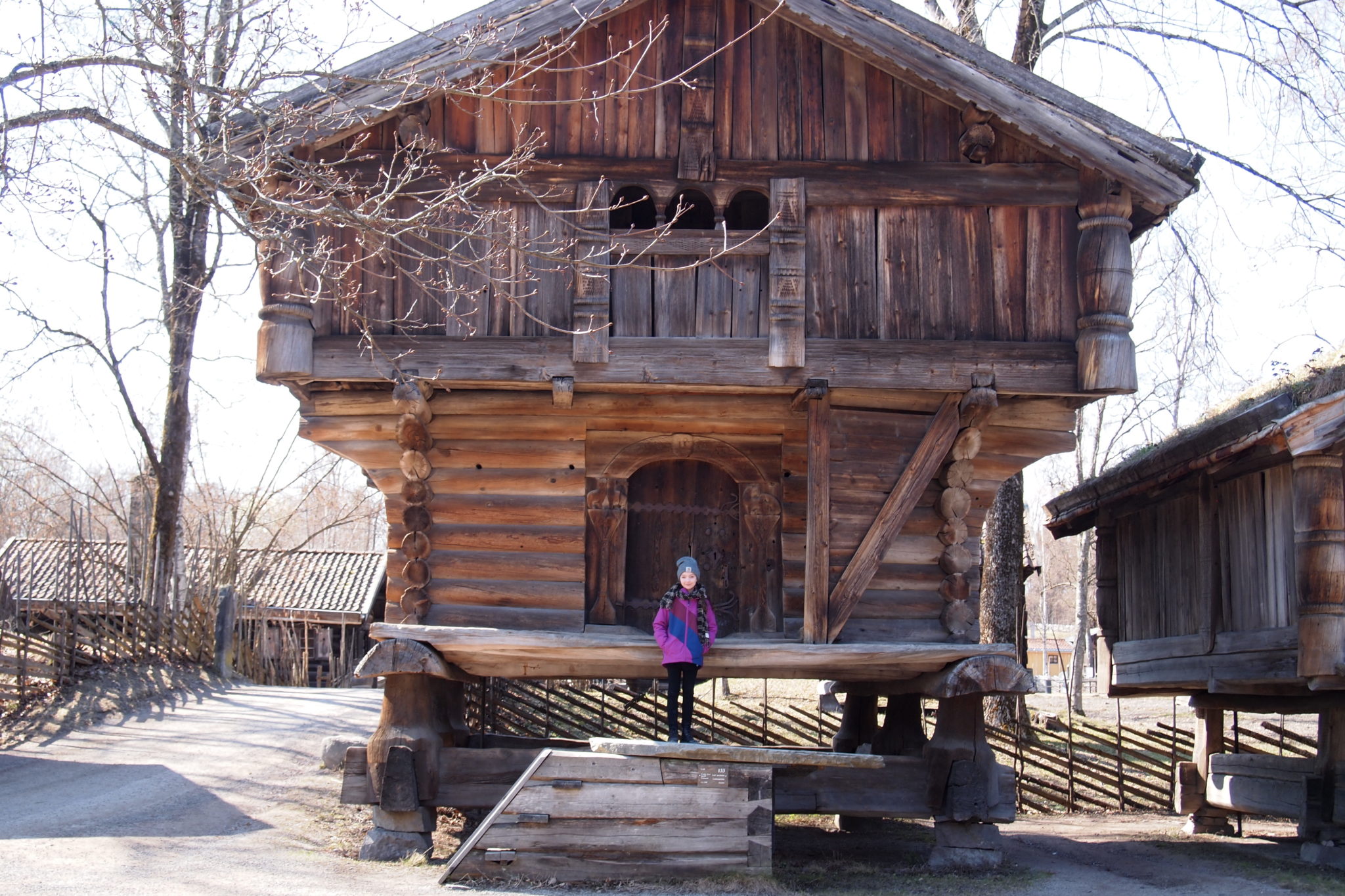A lot of people like folk museums for their down-to-earth “what life was like in the old days” approach to history. For me, the old days in question are never old enough. But when you’re traveling with a kid, the hands-on outdoor folk museum is kind of a no-brainer. Plus, the Norwegian Museum of Cultural History (Norsk Folkemuseum) in Oslo has a stave church. Since we were on Bygdøy anyway, that was enough to merit a quick visit. Little did I know they’d have to push us out the door at closing time.
The Draw
The Norwegian folk museum is an open-air museum with 160 historic buildings, mostly built in the last 500 years. One exception is the Gol Stave Church, a main attraction at the museum that was built in the village of Gol sometime around 1200. There are also indoor exhibits featuring Norwegian folk costumes, folk art, church art and Sami culture. They offer hands-on activities for children, and docents in period dress demonstrate old skills and explain aspects of life in different epochs. My daughter requested participatory art experiences on our itinerary, and this sounded like the kind of museum where you might get to try working at a loom or braiding rope.
The Reality
The reality of Norway’s hard divide between high season and off season with no shoulder in between meant that there were no costumed docents walking around or doing demonstrations. The majority of the buildings were locked up and only visible from the outside or, if you were tall enough, by peeking through a window. Surprisingly, running around on a sunny spring day peeking into windows had tremendous appeal to my ten-year-old. All the patience she extended to me at the Viking Ship Museum was now repaid, as she attempted to peek into every single one of the 160 historic buildings onsite.

The promised petting zoo of farm animals appeared deserted, and to my eyes, the dozens of elevated, turf-roofed farm buildings quickly blurred together. But my daughter was having a blast, stopping to photograph architectural details on nearly identical buildings and cataloguing the contents observed through dirty windows. We both found the apartment buildings where each unit was decorated in the style of a different decade entertaining. And the stave church, well, it deserves its own subheading. By the time we got to the indoor exhibits there were only a few minutes left to closing. We had to breeze past exhibits on folk art, clothing, and Sami culture. Fortunately these overlapped a lot with exhibits at our own Nordic Heritage Museum back home, so we didn’t miss too much.
Gol Stave Church
You may have noticed that I am irreligious. I have to work at being open-minded enough to stay on the polite side of antireligious. I do appreciate architecture, but churches don’t usually do it for me. (Exceptions include St. Stephen’s in Vienna and the chapel at Seattle U, both of which I can appreciate for purely aesthetic reasons).

I say all this is to set up what a tremendous surprise it was to walk inside the tiny wooden Gol stave church and feel something. Yes, of course it was pretty. But there really was a special atmosphere inside that little 13th century village church. Only one other visitor entered while we were there. She stopped short just inside the door, said, “Wow,” and quickly dropped to the floor to take a picture of the roof.

Medieval cathedrals in mainland Europe awe with their immensity. But this tiny church creates the same sense of smallness inside a vast universe using a very tall, narrow space. It almost felt like standing inside a concentrated column of energy.
Unexpected Highs
One of my favorite things about travel is how you’re guaranteed to have moments you’ll never forget, but they are almost never the ones you planned for. I never expected to have a spiritual moment in a church of all places. And I never thought that running around looking in the windows of old buildings would keep my 10-year-old occupied in sheer delight for a whole afternoon. I can only imagine what highs we might have achieved if all the activities I was expecting had been available. But then again, maybe the magic lay in having acres of old Norway all to ourselves.




About the author